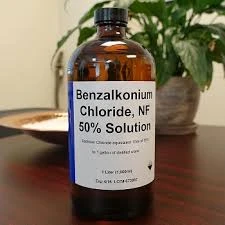Exploring the Properties and Applications of HEDP Acid in Various Industries
Hedp Acid A Comprehensive Overview
HEDP acid, or hydroxyethylidene diphosphonic acid, is a chemical compound recognized for its significant applications across various industries. As a member of the phosphonate family, HEDP is particularly noted for its chelating properties, which enable it to effectively bind with metal ions. This characteristic makes it immensely valuable in fields such as water treatment, oil and gas extraction, and detergents.
One of the primary uses of HEDP acid is in water treatment processes, where it serves as a scale inhibitor. Scale formation in water systems can lead to serious operational issues, including reduced heat transfer efficiency and increased energy consumption. HEDP disrupts the crystallization of calcium carbonate and other minerals, allowing them to remain suspended in the water rather than depositing on surfaces. This property makes HEDP a critical component in cooling water systems, boilers, and other industrial water applications.
Hedp Acid A Comprehensive Overview
Moreover, HEDP acid is widely utilized in the manufacturing of detergents and cleaning products. Its chelating ability allows it to bind hard water ions, which can otherwise hinder the effectiveness of detergents. By preventing the formation of insoluble salts in washing formulations, HEDP ensures that cleaning agents work efficiently, enhancing their performance in both household and industrial applications.
hedp acid

The environmental impact of HEDP acid has garnered attention, especially in recent years, as sustainability becomes a focal point across industries. HEDP is considered more environmentally friendly than traditional phosphates because it is biodegradable and does not contribute to eutrophication—a process where nutrient runoff leads to excessive growth of algae in aquatic ecosystems. This characteristic makes HEDP an attractive alternative for companies seeking to minimize their ecological footprint while still achieving effective performance in their applications.
Additionally, regulatory guidelines surrounding the use of phosphonates are evolving. As governments around the world implement stricter regulations on chemical discharges and their environmental impact, HEDP’s favorable profile may position it as a preferred choice. Manufacturers are increasingly exploring formulations that incorporate HEDP to meet both regulatory standards and consumer expectations for environmentally responsible products.
Despite its many advantages, the handling and application of HEDP acid require careful consideration. Industrial safety protocols must be followed to manage potential hazards associated with chemical exposure. Proper training and personal protective equipment (PPE) are essential for personnel interacting with HEDP to ensure a safe working environment.
In conclusion, HEDP acid stands out as a versatile and effective chemical compound with diverse applications across various sectors. Its ability to inhibit scale formation, enhance oil extraction, and improve detergent efficacy makes it an indispensable tool in modern industry. As companies continue to prioritize sustainability and compliance, HEDP’s environmentally friendly attributes will likely drive its continued adoption and innovation in numerous applications. The future of HEDP acid is promising, and ongoing research will undoubtedly uncover even more potential uses for this remarkable chemical.
-
Water Treatment with Flocculant Water TreatmentNewsJun.12,2025
-
Polymaleic AnhydrideNewsJun.12,2025
-
Polyaspartic AcidNewsJun.12,2025
-
Enhance Industrial Processes with IsothiazolinonesNewsJun.12,2025
-
Enhance Industrial Processes with PBTCA SolutionsNewsJun.12,2025
-
Dodecyldimethylbenzylammonium Chloride SolutionsNewsJun.12,2025





